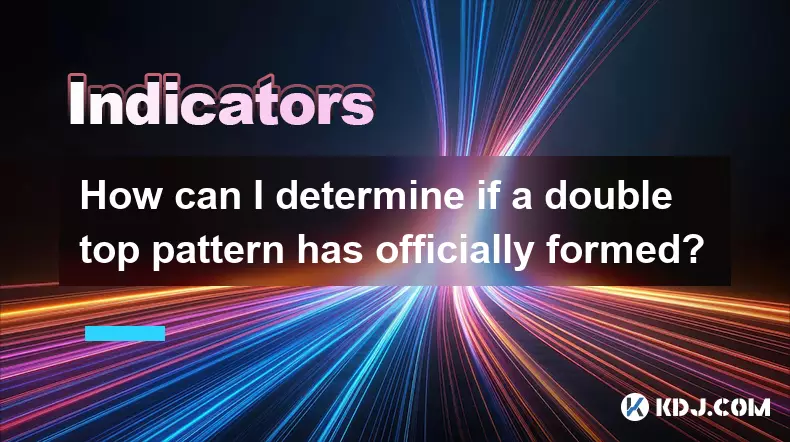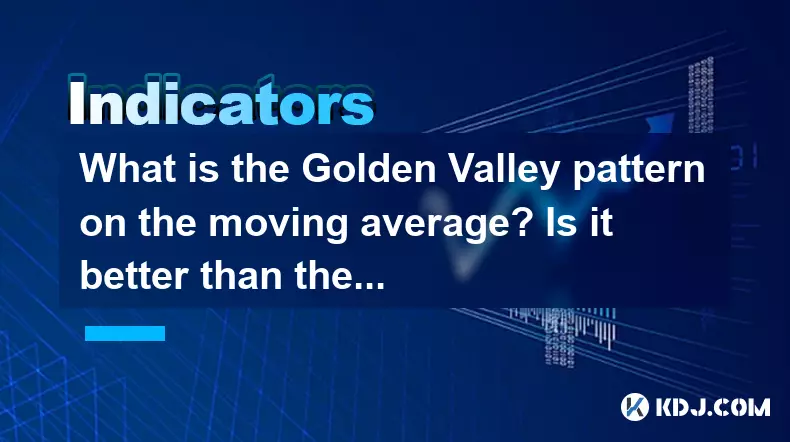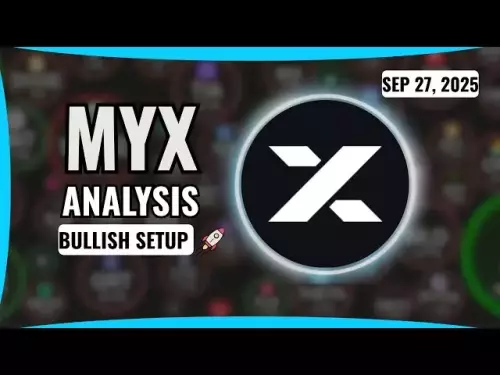-
 bitcoin
bitcoin $109523.663807 USD
-0.13% -
 ethereum
ethereum $4019.526508 USD
2.06% -
 tether
tether $1.000482 USD
0.00% -
 xrp
xrp $2.776815 USD
0.18% -
 bnb
bnb $958.942396 USD
0.12% -
 solana
solana $204.294698 USD
3.84% -
 usd-coin
usd-coin $0.999693 USD
0.00% -
 dogecoin
dogecoin $0.232115 USD
2.09% -
 tron
tron $0.338028 USD
0.84% -
 cardano
cardano $0.790920 USD
1.50% -
 hyperliquid
hyperliquid $44.871443 USD
5.60% -
 ethena-usde
ethena-usde $1.000322 USD
0.04% -
 chainlink
chainlink $21.034165 USD
2.60% -
 avalanche
avalanche $28.794831 USD
-0.54% -
 stellar
stellar $0.360466 USD
1.24%
How to use VWAP to set stop losses? How much deviation should be closed?
Using VWAP to set stop losses in crypto trading helps manage risk by exiting positions when prices deviate significantly from the VWAP, indicating potential reversals.
May 21, 2025 at 09:22 pm

Using Volume Weighted Average Price (VWAP) to set stop losses in cryptocurrency trading can be an effective strategy for managing risk. VWAP is a trading benchmark used especially in assessing the efficiency of trade execution. It provides traders with insight into both the trend and the value of a cryptocurrency at any given time. When setting stop losses using VWAP, the goal is to exit a position if the price deviates significantly from the VWAP, indicating a potential reversal or a significant shift in market sentiment.
Understanding VWAP
VWAP is calculated by taking the total dollar value of all trading periods divided by the total trading volume for the same time frame. The formula for VWAP is as follows:
[ \text{VWAP} = \frac{\sum (P_i \times V_i)}{\sum V_i} ]
where ( P_i ) is the price of the trade and ( V_i ) is the volume of the trade for each period ( i ).
In the context of cryptocurrency, VWAP can be used to gauge the average price at which the cryptocurrency has traded throughout the day, weighted by volume. This helps traders understand whether they are buying or selling at a favorable price.
Setting Stop Losses Using VWAP
To set stop losses using VWAP, traders typically monitor the price deviation from the VWAP line. The deviation can be measured in terms of percentage or standard deviations. Here's how to set up a stop loss using VWAP:
- Identify the VWAP Line: On your trading chart, the VWAP line is usually plotted as a moving average that adjusts throughout the trading session based on the volume and price data.
- Determine the Deviation Threshold: Decide on the percentage or number of standard deviations from the VWAP at which you will set your stop loss. Common thresholds include 1%, 2%, or one standard deviation.
- Set the Stop Loss: Place your stop loss order at the price level that represents the chosen deviation from the current VWAP. For example, if the VWAP is $50,000 and you choose a 2% deviation, your stop loss would be set at $49,000 (2% below VWAP) if you are long, or $51,000 (2% above VWAP) if you are short.
Choosing the Right Deviation
The choice of deviation depends on several factors, including your risk tolerance, the volatility of the cryptocurrency, and the overall market conditions. Here are some considerations for choosing the right deviation:
- Volatility: More volatile cryptocurrencies may require a wider deviation to avoid being stopped out prematurely. Conversely, less volatile assets might allow for a narrower deviation.
- Risk Tolerance: Traders with a lower risk tolerance might prefer a smaller deviation to protect their capital, while those with a higher risk tolerance might opt for a larger deviation to give the trade more room to breathe.
- Market Conditions: During periods of high market turbulence, a larger deviation might be necessary to account for increased price swings.
Implementing VWAP Stop Losses in Practice
To implement VWAP stop losses in practice, follow these steps:
- Choose a Trading Platform: Ensure that your trading platform supports VWAP indicators and allows for the setting of stop loss orders.
- Add VWAP to Your Chart: Access the indicators menu on your trading platform and add the VWAP indicator to your chart.
- Monitor the Price Action: Keep an eye on the price relative to the VWAP line throughout your trading session.
- Adjust the Stop Loss: As the VWAP line moves, adjust your stop loss order accordingly to maintain the chosen deviation level.
Evaluating the Effectiveness of VWAP Stop Losses
Evaluating the effectiveness of using VWAP for stop losses involves reviewing past trades to see if the strategy helped in minimizing losses or maximizing gains. Consider the following:
- Backtesting: Use historical data to backtest your VWAP stop loss strategy to see how it would have performed in the past.
- Trade Analysis: Analyze each trade where VWAP stop losses were used to determine if the stop loss was triggered at an appropriate time and if it helped protect your capital.
- Adjustments: Based on your analysis, make necessary adjustments to your deviation thresholds or trading strategy to improve future performance.
Practical Example of Using VWAP for Stop Losses
Let's consider a practical example. Suppose you are trading Bitcoin (BTC) and the current VWAP is $60,000. You decide to set a stop loss with a 1.5% deviation from the VWAP. Here's how you would proceed:
- Calculate the Stop Loss Price: For a long position, the stop loss would be set at $59,100 (1.5% below $60,000). For a short position, the stop loss would be set at $60,900 (1.5% above $60,000).
- Place the Stop Loss Order: Enter the stop loss order at the calculated price on your trading platform.
- Monitor and Adjust: As the VWAP line moves throughout the trading session, adjust your stop loss order to maintain the 1.5% deviation from the VWAP.
Frequently Asked Questions
Q: Can VWAP be used for setting take-profit levels as well?A: Yes, VWAP can also be used to set take-profit levels. Similar to stop losses, you can set take-profit orders at a certain percentage or number of standard deviations away from the VWAP line. This can help you lock in profits when the price moves favorably away from the VWAP.
Q: How often should the VWAP line be recalculated?A: The VWAP line is typically recalculated with each new trading period, which can be as short as one minute or as long as one day, depending on the settings of your trading platform. It is important to ensure that your trading platform updates the VWAP line in real-time to maintain accurate stop loss levels.
Q: Is VWAP more effective for certain types of cryptocurrencies?A: VWAP can be effective for all types of cryptocurrencies, but it may be more beneficial for those with higher trading volumes and liquidity. Cryptocurrencies with lower volumes might experience more erratic price movements, making VWAP less reliable for setting stop losses.
Q: Can VWAP be used in conjunction with other technical indicators?A: Yes, VWAP can be used alongside other technical indicators such as moving averages, RSI, and MACD to enhance your trading strategy. Combining VWAP with other indicators can provide a more comprehensive view of market trends and help in making more informed trading decisions.
Disclaimer:info@kdj.com
The information provided is not trading advice. kdj.com does not assume any responsibility for any investments made based on the information provided in this article. Cryptocurrencies are highly volatile and it is highly recommended that you invest with caution after thorough research!
If you believe that the content used on this website infringes your copyright, please contact us immediately (info@kdj.com) and we will delete it promptly.
- Crypto Presales: Is $BFX the Next Big Thing?
- 2025-09-28 00:25:12
- Kraken's IPO Ambitions: Navigating Valuation in a Recovering Crypto Market
- 2025-09-28 00:25:12
- Bitcoin's Bumpy Ride: Navigating Risks and Potential Downturns
- 2025-09-28 00:30:01
- Sleep Token's Macabre Metal Mastery: A Deep Dive
- 2025-09-28 00:30:01
- AI-Driven Metaverse: Building Blockchain Trust in the Digital Frontier
- 2025-09-28 00:30:01
- Lyno AI: The Altcoin Presale Primed for a 1400% Surge?
- 2025-09-28 00:30:12
Related knowledge

What is a tower bottom candlestick pattern? Does it have a high success rate?
Sep 22,2025 at 07:18am
Tower Bottom Candlestick Pattern Explained1. The tower bottom candlestick pattern is a reversal formation that typically appears at the end of a downt...

What is a black hole pattern in the MACD indicator? Is it a cause for concern?
Sep 21,2025 at 06:54pm
Bitcoin's Role in Decentralized Finance1. Bitcoin remains the cornerstone of decentralized finance, serving as a benchmark for value and security acro...

How can I use the psychological line (PSY) to determine market sentiment?
Sep 17,2025 at 02:19pm
Understanding the Psychological Line (PSY) in Cryptocurrency TradingThe Psychological Line, commonly referred to as PSY, is a momentum oscillator used...

How can I determine if a double top pattern has officially formed?
Sep 21,2025 at 03:18am
Understanding the Structure of a Double Top Pattern1. A double top pattern consists of two distinct peaks that reach approximately the same price leve...

What is the Golden Valley pattern on the moving average? Is it better than the Silver Valley pattern?
Sep 21,2025 at 02:54pm
Understanding the Golden Valley Pattern in Moving Averages1. The Golden Valley pattern is a technical formation observed in cryptocurrency price chart...

What does a death cross of the RSI in the strong zone (above 50) mean?
Sep 17,2025 at 10:54pm
Understanding the Death Cross in RSI Context1. The term 'death cross' is traditionally associated with moving averages, where a short-term average cro...

What is a tower bottom candlestick pattern? Does it have a high success rate?
Sep 22,2025 at 07:18am
Tower Bottom Candlestick Pattern Explained1. The tower bottom candlestick pattern is a reversal formation that typically appears at the end of a downt...

What is a black hole pattern in the MACD indicator? Is it a cause for concern?
Sep 21,2025 at 06:54pm
Bitcoin's Role in Decentralized Finance1. Bitcoin remains the cornerstone of decentralized finance, serving as a benchmark for value and security acro...

How can I use the psychological line (PSY) to determine market sentiment?
Sep 17,2025 at 02:19pm
Understanding the Psychological Line (PSY) in Cryptocurrency TradingThe Psychological Line, commonly referred to as PSY, is a momentum oscillator used...

How can I determine if a double top pattern has officially formed?
Sep 21,2025 at 03:18am
Understanding the Structure of a Double Top Pattern1. A double top pattern consists of two distinct peaks that reach approximately the same price leve...

What is the Golden Valley pattern on the moving average? Is it better than the Silver Valley pattern?
Sep 21,2025 at 02:54pm
Understanding the Golden Valley Pattern in Moving Averages1. The Golden Valley pattern is a technical formation observed in cryptocurrency price chart...

What does a death cross of the RSI in the strong zone (above 50) mean?
Sep 17,2025 at 10:54pm
Understanding the Death Cross in RSI Context1. The term 'death cross' is traditionally associated with moving averages, where a short-term average cro...
See all articles









































































